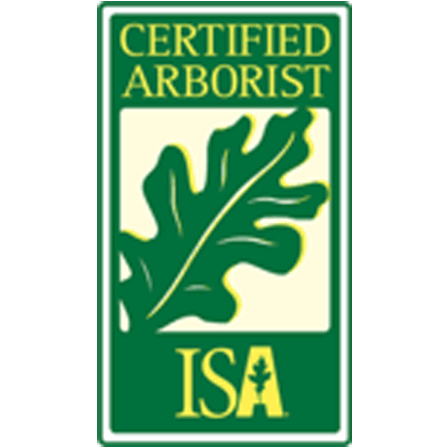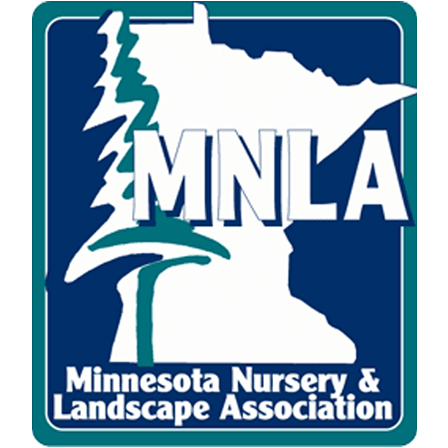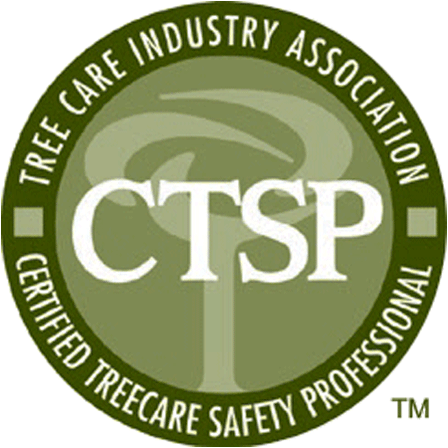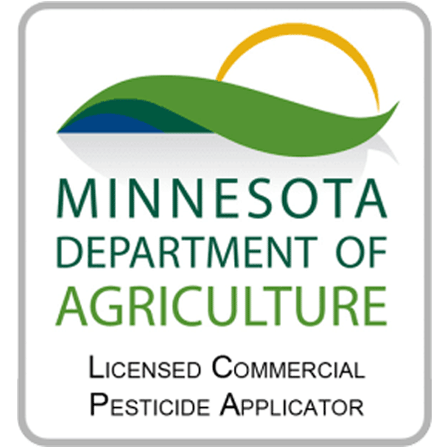With changing seasons throughout the year, it is important to inspect your trees every few months to make sure they’re going alright. When you see some branches declining, or leaves yellowing and drying out, it is imperative to prune them effectively to avoid harming the tree’s growth. Learn, based on the experience of our arborists, when is the best time to prune your trees.
How to Identify and Prevent Common Tree Diseases
Trees are susceptible to developing various diseases all year round. So, in order to stay ahead of the game and make sure your landscape is free of any injuries, detecting these diseases early on can help save your trees from major damage. Here’s how you can identify and prevent some of the most common tree diseases.
How to Winterize Your Trees in Minnesota
In order to ensure the plants and landscape on your property flourish next spring, it is imperative to take preventative measures for the winter months. In Minnesota, tree service at Saint Paul is especially important because of the intense winter conditions. Winter injuries could include sunscald on trunks and branches, jack frost bites, browning of evergreen foliage, or snow and ice damage. Preparing your plants for this season can help them overcome the winter in a healthy and durable way.
How Do You Treat Oak Wilt?
Oak wilt is a deadly fungal disease that causes the wilting and eventual death of oak trees. This disease is especially prominent on live oaks, Shumard oaks, Spanish oaks, water oaks, black jack oaks and other members of the red oak family. White oak trees are also susceptible to the infection, but appear to be more tolerant to the effects of oak wilt. However, this doesn’t mean they aren’t at risk.
How Do You Know If You Have Dutch Elm Disease?
Do your yard and trees need Dutch Elm Disease treatment?
Dutch Elm Disease is a devastating, and often deadly, fungal infestation affecting all varieties of elm trees, including the American Elm. Dutch Elm Disease can affect other non-elm trees as well, but this is not common. With this post we will try to provide answers to the most common questions people ask about Dutch Elm Disease.
The Dutch Elm disease Basics
Dutch Elm Disease damages the water-conducting cells of the tree. The tree’s natural response to the damage caused by the invasive fungus, paradoxically, intensifies the damage to the water-conducting cells. In the earliest stages of an infestation, the damage is taking place deep inside the tree where it can’t be seen by the casual observer. The first outwardly visible signs of the disease will not appear until the internal damage is severe enough to restrict the flow of water and nutrients to portions of the tree. Be on the lookout for the first hint of any of these early symptoms.
Read Our Other Blogs
Browning/Wilting Leaves
The restriction of water and nutrients will cause the leaves on affected sections of the tree to wilt and curl inward. The leaves will turn from green to yellow, and finally brown before falling from the tree. If your elm tree is displaying patches of yellow or brown leaves it may be a sign of Dutch Elm Disease.
Dead Branches
After the leaves wilt and fall, the branches will begin to die as well. A tree with sparse patches where branches are no longer producing leaves, or branches have died and fallen from the tree, should be analyzed for Dutch Elm Disease.
Dark Streaks Within Branches
The browning of leaves and dying off of branches are symptoms that are common to many different tree ailments. Dark streaks on the inner portion of the tree branch, beneath the bark, is a more accurate and definitive sign that your tree’s condition is the result of Dutch Elm Disease. You will have to remove the bark to check for the presence of dark streaks. Though the presence of streaks is highly indicative of Dutch Elm Disease, the streaks will need to be tested by a professional for confirmation.
Can You Stop Dutch Elm Disease?
There is no cure for Dutch Elm Disease, and the damage that it causes cannot be reversed. The following treatment options can effectively halt the spread of the damage by eliminating the Elm Bark beetle that spreads the fungus.
Aggressive Removal Of Dead And Dying Branches
Be vigilant about checking your elm trees for dead or dying branches and remove suspect branches immediately to eliminate breeding spots for Elm Bark beetles. If the dead branches are found and removed while the tree is dormant the Elm Bark beetles themselves will be destroyed as well. Once removed, the dead branches must be disposed of in a chipper, or by burning or burying them.
Aggressive Removal Of Dead And Dying Branches
Topical insecticide applications applied by qualified arborists have proven effective at killing the Elm Bark beetles that spread the fungus. The success of insecticide treatment hinges on the correct identification of the type of Elm Bark beetle causing the infection. Native Elm Bark beetle infestations require insecticide treatment applied to the tree’s lower stems at the end of summer, while European Elm Bark beetle infestations require insecticide treatment of the tree’s crown in the spring.
Sever Root Grafts
Elm trees in close proximity to one another form root grafts when the roots of one tree fuse with the roots of the neighboring tree. If one of the trees is infected with the fungus that causes Dutch Elm Disease, the grafting will provide a pathway for the fungus to infect the other trees as well. If an infected tree is grafted to a healthy tree the root graft must be severed before the removal of the dying tree. If the graft is intact when the dying tree is removed the healthy tree will immediately pull in the fluids of the dying tree through the grafted roots. If two or more healthy trees are grafted together the root grafts should be severed as a preventative measure.
Fungicide Root Injections
Fungicides injected directly into the tree’s root system to be disseminated through the entire tree by its own vascular system are the most effective method of eliminating the fungal infection and halting the devastating damage that it causes. When applied by qualified arborists before the tree has sustained a life-threatening degree of damage, fungicidal injections offer the best chance of saving the tree.
Why Is Dutch Elm Disease So Destructive?
There are several factors that make Dutch Elm Disease one of the most destructive tree diseases in the natural world.
Ease And Speed Of Transmission
The fungus responsible for Dutch Elm Disease is spread through the elm’s vascular system. The elm’s intertwining root systems which graft one tree to its closest neighbors allow the fungus to spread very quickly from one infected tree out to every other tree in the system.
Multiple Destructive Elements Compound Damage
The breeding activity of the elm bark beetle inflicts a significant amount of damage on the tree’s life-sustaining vascular structure above and beyond the fungal damage.
Early Stages Of Disease Are Invisible
Extensive and irreversible damage is taking place inside infected trees long before the first outwardly visible symptoms appear to indicate the tree is infected.
Use an expert to help you curb the spread of Dutch Elm Disease
If you suspect one or more of your elm trees may be showing signs of Dutch Elm Disease, it is imperative to seek expert advice as soon as possible. Birch Tree Care’s certified arborists and technicians have the knowledge and expertise to help you protect your trees from destructive diseases like Dutch Elm Disease. Contact us for a free consult and let our experts help you with a Dutch Elm Disease treatment plan to save viable trees and prevent infection of healthy trees. Reference our handy plant healthcare calendar below.
Apple scab treatment & the plant healthcare schedule
Do your yard and trees need apple scab treatment?
The weather is warming up (kind of) across The Twin Cities area and now is the time to start booking in plant health care work. Apple scab treatment options are performed by us throughout April, May, June & July during the warmer months of the year.
By getting prepared early, you’ll ensure your crabapple trees will be fully prepared for any forthcoming apple scab onslaughts. Not to mention the fact that your yard will be an oasis to enjoy during the warmer months of the year.
(Pictured below is our suggested plant health care treatment schedule)
Some important points to note for apple scab treatment
It’s extremely important to plan ahead as a lot of apple scab treatment options need to be applied before any leaf spots actually appear on your tree
Because apple scab spores can be released very early on amidst the growing season, treatment options may need to be applied before tips from the tree emerge in spring
Read Our Other Blogs
Use an expert to help you curb the spread of apple scab disease
Because treatment can be quite involved and require an expert arborist’s opinion on a treatment schedule that is right for you, we recommend talking to a professional as soon as possible so that you don’t miss out on the ideal time to treat the disease
Get in touch with us, and one of our certified arborists will provide you with a quote and a treatment plan that works for you
With bookings for spring filling up fast, we recommend visiting our contact page below and leaving your details so that we can follow up and help out with your apple scab treatment
Talk to the Twin Cities apple scab experts
We’re now taking bookings for plant health care for apple scab treatment and prevention across the Twin Cities area. Having served over 3,100 customers, we know the area, seasons and treatment plans intricately. Get in touch for a free quote.
Apple scab - when should you treat it and how to avoid it
Apple scab is no fun! Have you heard about it? Or even worse, experienced it in your yard and had trees succumb to this invasive fungal disease?
It’s unfortunately an all too common sight for us in The Twin Cities area. We’ve seen this affect our customer’s homes and yards on more than one occasion. That’s why we’re trying to spread the awareness of apple scab and the best apple scab treatment methods in order to help our customers get on top of this problem before it’s too late.
So what is the lifecycle of apple scab?
In late fall/early spring it's not uncommon to see leaves starting to become infected with black or brown lesions. These can begin to appear on the fruit and this is a tell-tale sign of an infection from the previous year.
Spores are transferred from tree to tree by wind or rain
Because apple scab is a fungus, it can affect the fruit and blossoms on a tree
If left untreated the spores can reproduce and lead to further infection of leaves or fruit that are present on other trees
The infection can continue throughout the wet periods without you even noticing it
Read Our Other Blogs
When should you book in for apple scab treatment?
Typically, we find that April, May, June & July are the best months to schedule your Plant Health Care services. This helps us to maintain your landscape so you can enjoy the beautiful weather when it's here and will ensure your trees are fully prepared for any apple scab onslaught.
What should you be looking for?
There are some telling signs to look for when trying to spot if your tree has been infected. These are:
Brown and olive-colored spots on leaves
Leaves may turn yellow and drop from the tree but only if heavily infected
The apples on the tree may also display lesions or brown spots
The spots on the apples can become brown and corky
Infections can cause the apples to mature unevenly and even crack in some cases
What you can do to try and reduce the risk of an apple scab infection
There are a couple of things you can do to try and reduce the risk of being infected:
Book in with an ISA certified arborist at the right time of the year to ensure you have a proper consultation and plan on how to deal with an infection or the prevention of one (The best times to book are in April, May, June, or July)
Rake and dispose of fallen leaves in an efficient manner in order to avoid a build-up of leaf matter
Save the compost - Don’t compost leaves that are infected
Ensure your trees are pruned regularly by professionals in order to promote air circulation
Don’t water your trees from the top. Only water them at ground level - this helps to reduce splashback on other foliage in your yard
If you have space, plant apple trees far from other apple trees to decrease the risk of transmission
Talk to your local Twin Cities experts
We’re now taking bookings for plant health care for apple scab treatment and prevention. Get in touch for a free quote.














